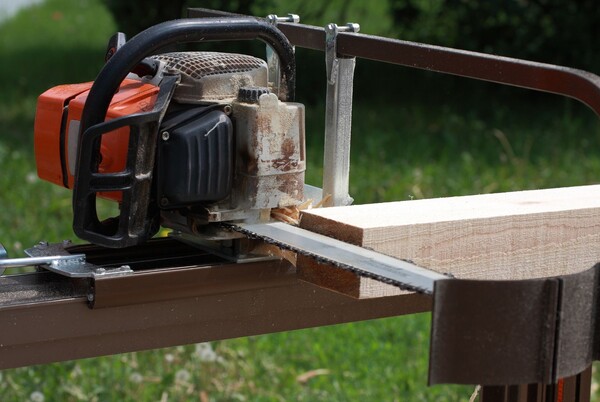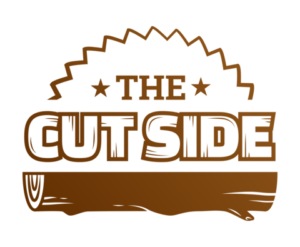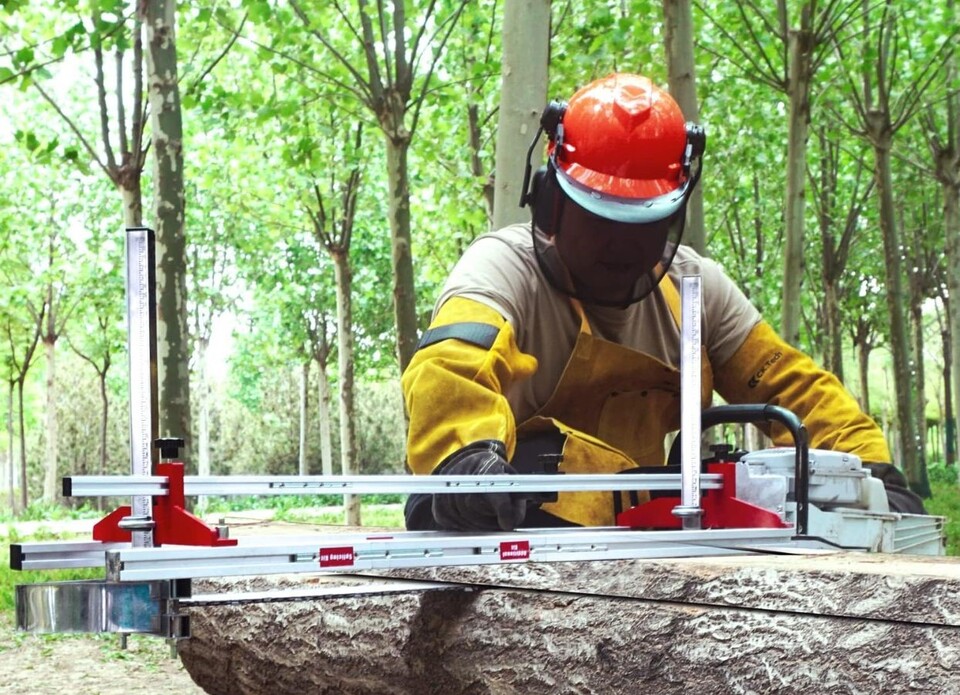Chainsaws are powerful cutting tools. They are much dangerous compared to portable bandsaws because of its wide range of portability which poses a high risk for anyone nearby.
To prevent the chance of hurting oneself or others, proper protective gears and extra awareness must be practiced by the user. Here are some guidelines and suggested protective gears you need to wear when using this cutting tool.
Chainsaw Personal Protective Equipment (PPE)
One needs to secure his safety when operating a chainsaw. There are distinct quality standards followed by each manufacturer in producing these protective gears depending on the state’s requirement.
These protective gears aim to secure six main parts of the operator, that include head, eyes, ears, legs, feet, and hands. These things must meet the minimum requirement imposed by the Occupational Safety and Health Administration (OSHA), American National Standards Institute (ANSI), and the American Society for Testing and Materials (ASTM).
However, these safety standards can vary depending on which country or state it is supposed to be sold and used.
Classifications of Chainsaw Protection
Each degree of protection provided by different gears sold in the market is classified into four categories. Typically, the protective gears which offer a higher degree of protection are priced more compared to its lower counterparts.
The classification of protection level is based on the speed of the chainsaw it can resist damage.
| Safety – Class | Maximum Chainsaw speed (m/s) |
|
0 |
16 |
|
1 |
20 |
|
2 |
24 |
|
3 |
28 |
Most hand and upper body protective gears are under Class 0. Why? Because too much protective coating hinders effective maneuver and movement when working. Likewise, operators need to have a comfortable upper gear, particularly when working for long hours.
Leg protectors are mostly under class 1. Comfort and easy movement are also observed for leg protectors because operators need to easily move their legs to maintain balance.
Other states or countries have more classification levels for the degree of protection provided by these gears and equipment.
Chainsaw Clothing
In general, these protective gears and equipment have bright colors in order to maintain visibility and awareness. Typically, there are orange in color.
In general, these clothing need to be lightweight, flexible but strong enough to resist a chainsaw speed of 16 meters per second. They are mostly made from nylon fabric and easy to wear and remove.
Chainsaw Leg Protection
Leg protection or chainsaw chaps are like the upper protective clothing which resists cuts from chainsaws. There are two types of chaps: apron chap and full-wrap chap.
An apron chap only provides protection on the front part of the leg while a full-wrap chap covers the entire section of the legs. Apron chaps are also called Type A chainsaw trousers while full-wrap chaps are called Type C chainsaw trousers.
A reliable chainsaw chap must adhere to any of the following safety standards:
- ASTM F1897-08
- UL Classified
- Reinforced with ballistic nylon pads
Here are the trousers I would recommend on a long day of sawing, and when your tired, you do not want an unprotected oops! Check out the nice orange that you could kind of say goes with Stihl, or Husqvarna, here they are.
Head Protection
Most head gears for chainsaw are made from aluminum and hard plastic. Their main function is to protect the head from falling debris and concussions.
Some chainsaw helmets also have face shield which gives you the option of no longer needing to buy for a goggles or eye protection.
These helmets must meet any of the following standards:
- CSA Standard Z94.1-05
- ANSI Standard Z89.1-2009: Industrial Head Protection
Eye Protection
You have four options for eyewear protection for chainsaw: face shield, safety glasses, goggles, and coverall eyewear.
Typically, all eyewear for chainsaw must comply with standards such as CAN.CSA Standard Z94.3-07, ANSI Standard Z87.1-2010 or the OSHA standard.
Gloves or Hand Protection
Good hand protection for chainsaw must be made from leather with ballistic nylon supplements at the back of the hand. It must offer good grip and comfort to prevent hand fatigue for long working hours.

Foot Protection
Here are some of the important features you need to look for good log boots or footwear for the chainsaw.
- Heavy and nice fit
- Compliant with any of the following standards:
- CAN/CSA Standard Z195-09
- ANSI Standard Z41-1999
- ASTM F2412-2005
- ASTM F2413-2005
- Standard Specifications for Performance Requirements for Protective Footwear
- Made from ballistic nylon and with rubber soles which provides comfort for any environment or weather condition
Hearing Protection
There are two options for this: ear plugs and ear muffs. Here are some of the important features for good hearing gear.
- Noise reduction rating (NRR) 21dB to 24dB
- Compliant with CSA Standard Z94.2-02
- Comfortable to use and has a tight fit on the ears
I probably should have the above in order of importance, but here it is now in my opinion; shoes, legs torso and face. However you need ear protection all day long. After the first 1 to 5 minutes hearing damage starts, says the experts. I use the helmet face shield and earmuffs all in one, harder to loose that way. Check them out here, and let me know if you like them?
Precautions When Fueling Your Chainsaw
Gasoline-fueled chainsaws provide greater power compared to battery-operated and electric ones. However, these types also pose a higher risk due to the usage of fuel.
Here are a few things to bear mind when fueling this saw type:
- Read the product instruction for fueling the chainsaw
- Make sure to use suitable storage containers for gasoline. These containers must comply with the CSA International B376-M1980 (R2008).
- Never refuel a hot chainsaw for there is a considerable chance of creating a flame
- Avoid spillage, use a funnel when refueling
- Always have a fire extinguisher near you when refueling
- Maintain a well-ventilated area for refueling
- Never smoke when refueling your saw
Questions or Concerns
If you have other things to ask or any concerns to raise, please feel free to contact us anytime. We will do our best to cater your needs in the shortest turn around time. We have other articles that you can access which might be of any help to you.

